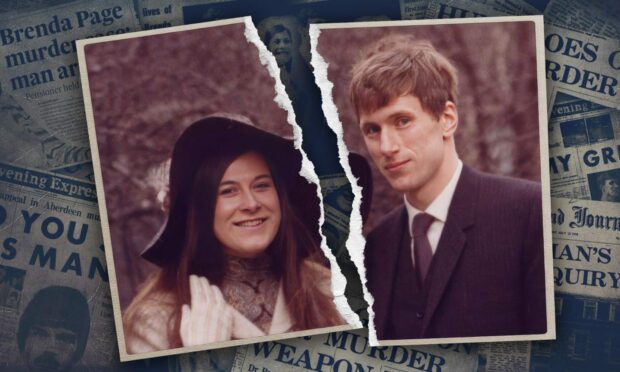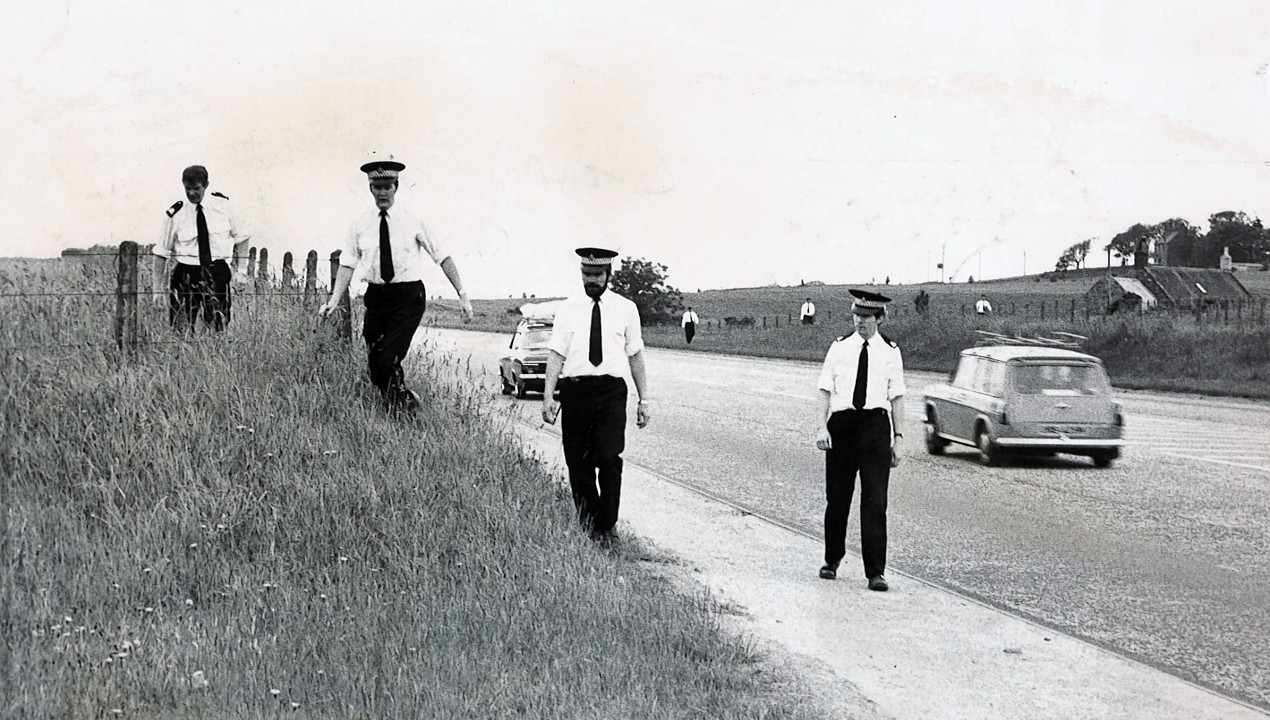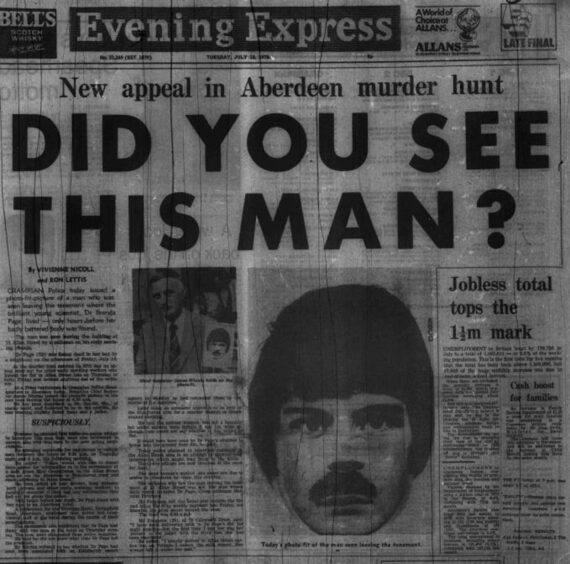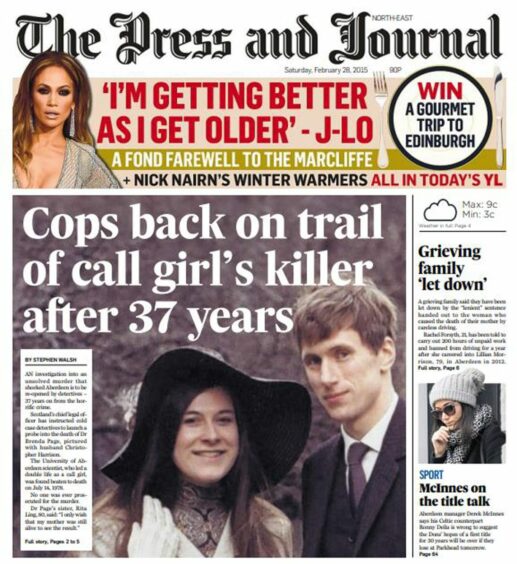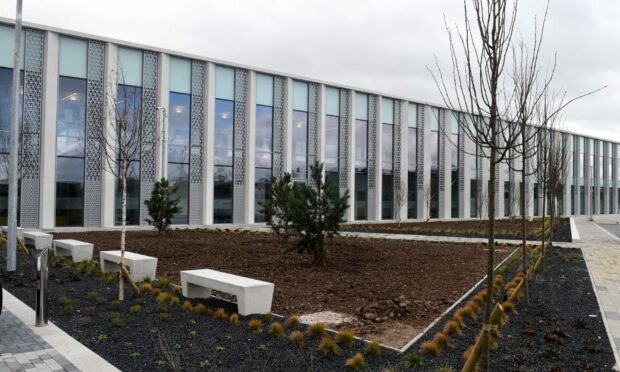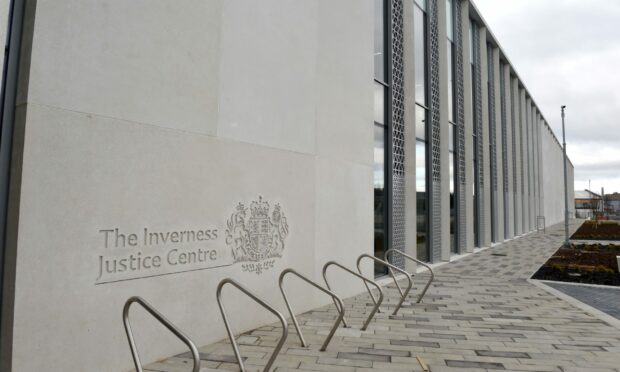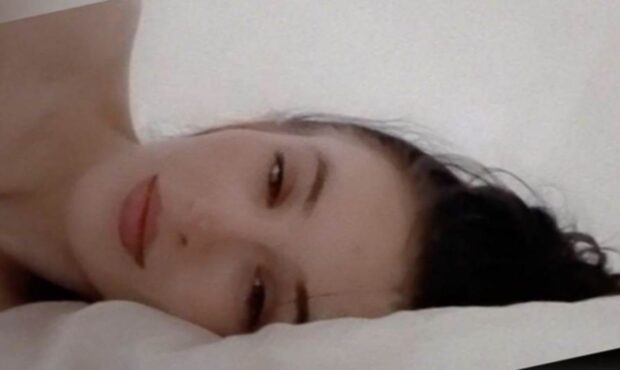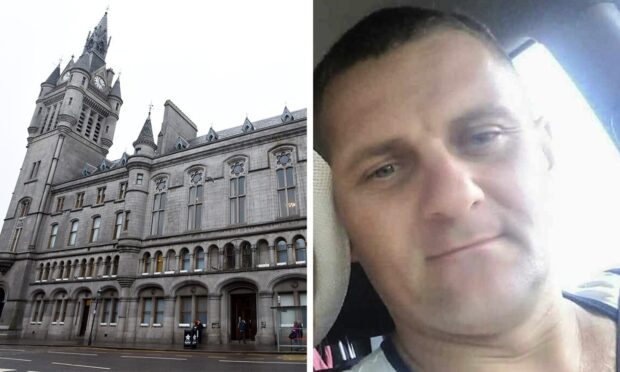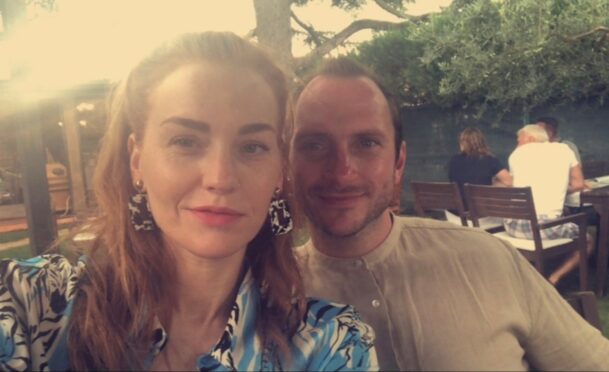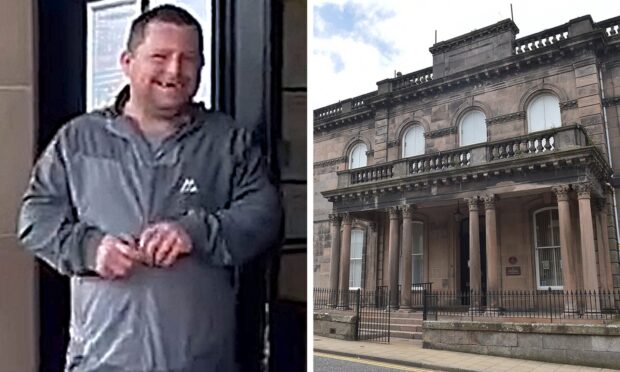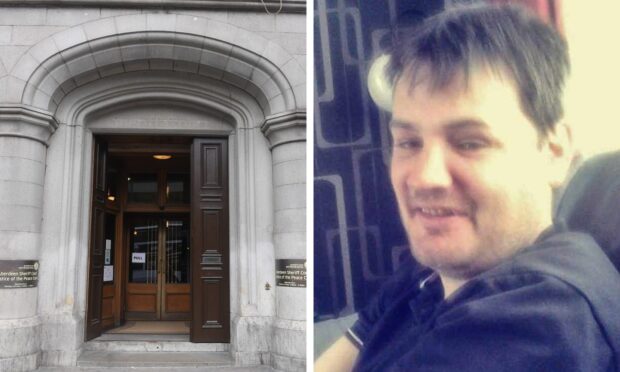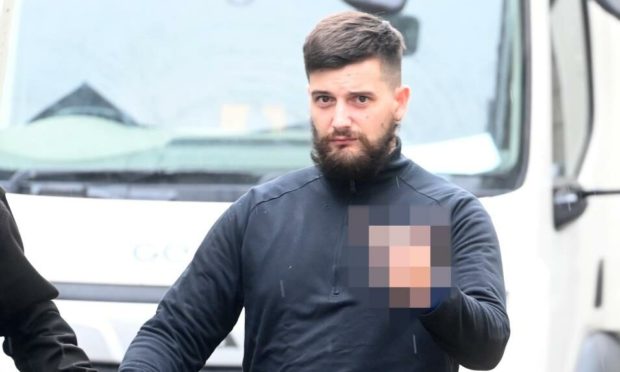Brenda Page’s killer vanished in the misty early morning half-light of July 14 1978, before dawn, as the city slept and the streets sat impassive and silent.
Only a couple of hours before, the 32-year-old genetic scientist had arrived home in her beige Mini and put the key into the lock of her flat on Allan Street, unaware that someone was hiding inside.
She was brutally beaten to death with a heavy implement and her bloodied, barely recognisable body was left sprawled across her bed.
Her killer departed as silently as he’d appeared, slipping out onto the cobbled street and into the dusky twilight before vanishing like a phantom.
It was a murder mystery that would confound police for decades, although one prime suspect – ex-husband Christopher Harrisson – was identified early on in the investigation and he would remain in detectives’ crosshairs for 44 years.
‘I saw nothing but blood and hair’
Elderly next-door neighbour Elizabeth Gordon, who had befriended Brenda the year before when she moved into the Allan Street flat, was to make the grim discovery on July 14.
Work colleague Gordon Stephen raised the alarm after Brenda, who was supposed to be signing off important papers that day, failed to turn up for work at Aberdeen University.
He subsequently failed to get an answer at her door and contacted Elizabeth, who had a spare key to the property.
Elizabeth recalled: “I took the key and told him to stay at the door.
“I found her in the bedroom, dead.”
Brenda’s lifeless body was curled up on the bed, fully clothed. Dr Page had been battered to death about the head and body with a blunt instrument until she was hardly recognisable.
Elizabeth added: “I saw nothing but blood and hair.”
Elizabeth was so traumatised by the experience she moved out of the property shortly after.
It’s believed her killer had prised open Brenda’s bedroom widow with a chisel-tipped implement and likely was hiding inside a wardrobe when she returned.
Blood was found smeared on the bathroom light switch and the front door handle where the killer had made his escape.
The grim discovery sparked a major murder investigation as Grampian Police worked around the clock in their search for the brutal killer.
With around 35 detectives and 50 uniformed officers assigned to the case during the first week of the investigation, police made 550 inquiries and collected more than 200 statements.
More than 5,000 posters were distributed across the city.
Detective Chief Inspector James Ritchie, who led the initial inquiry, said he believed Brenda “probably knew the person who killed her” – the first indication that someone close to her may have been responsible.
In the days that followed, it emerged the scientist had been leading a double life as an escort and had dined with two businessmen at Aberdeen’s Treetops Hotel on the night of her death.
However, these men were soon eliminated from the police enquiry when it became known that Brenda had left the hotel and driven home alone at around 2.30am.
Brenda, a graduate of both London University and the University of Glasgow, started working for Capital Escorts Agency in 1976, as a means to scrape together a deposit for her Allan Street flat, her friend and colleague Jessie Watt said years later.
She added: “[Brenda] found it difficult meeting people socially outwith work colleagues, so when an advert appeared in the paper looking for professional lady escorts to accompany gentleman on business outings, we joked about it and spoke of the possibility of going along for the interview.
“It was very above board and wasn’t at all sleazy and had nothing to do with call girls. I didn’t take it further and I did not know Brenda had until after the incident.”
However, Brenda had also informed her sister Rita Ling and mother Florence about working for the agency.
“She told us she was going to have some nice dinners and make some nice friends,” Rita recalled.
“Had she known all this publicity would have come from her activities it would be the last thing she would have done.
“She was anxious to earn a little money and thought that would be an agreeable way of doing it.”
Years later, however, a former manager of the escort agency revealed that during a dinner meeting with Brenda just days before she was murdered she had told him she was concerned for her safety.
William Austin said: “I had been up to see her only a few days before. We had dinner together and she seemed to be fine.
“But she said she was frightened. I did tell the police that at the time.”
A suspect emerges …
The source of those fears was one man: ex-husband Dr Christopher ‘Kit’ Harrisson.
By most accounts, the union was an unhappy one, with Harvard and Cambridge university-educated Harrisson’s unreasonable behaviour cited as the reason for the breakdown of the marriage, which began in 1972.
Brenda told sister Rita that Harrisson could be “nice or nasty” and that living with him was “unpredictable” and “like walking on eggshells”.
Witnesses during the High Court murder trial also painted a portrait of an unhappy and sometimes violent relationship.
In correspondence with divorce lawyer Nicol Hosie, she described Harrisson carrying out repeated violent assaults.
In one letter, Brenda claimed Harrisson repeatedly punched her in the face when she suggested he pack a tie to wear on holiday.
Prosecuting the case, advocate depute Alex Prentice KC asked Mr Hosie if, during his meetings with Brenda, he formed the opinion that she was concerned about Harrisson.
“Oh yes. She was scared of him,” he replied.
‘He was going to kill her’
Their divorce was eventually granted following a two-year separation but Brenda expressed concerns that Harrisson was stalking her.
It was also reported at the time that on the day the couple’s divorce was finalised, Harrisson went to the Allan Street flat and hurled abuse at her.
As a result of that incident, an interim interdict was sought and taken out preventing Harrisson from going anywhere near Dr Page’s home or work.
During the murder trial, jurors were shown a copy of a letter to Harrisson from Brenda in which she told him she wanted “no part” of the “dishonesty with which you surround your life”, adding: “Just get out of my life and stay out.”
Perhaps most damning of all was evidence from a friend of Harrisson who claimed he called her the night before the murder and said he was going to kill his ex-wife.
Asked about a telephone call to her on July 13 1978, Elsa Christie said she had received a call from Harrisson who rang her “quite often” in a “depressed” state.
“He said he was going to kill her,” she told the prosecutor, advocate depute Alex Prentice KC.
“He was looking for sympathy. He said she’d stolen his research and that he was going to kill her. He was ranting.”
Police were treating him as the prime suspect and questioned him but without evidence to link him to the crime scene he was released without charge.
On the sixth day of the murder hunt a brief prepared statement was issued by Harrisson’s Aberdeen solicitor, David Burnside.
It said: “Dr Harrisson has asked me to state publicly the sincere and heartfelt grief which feels at the tragic and untimely death of his former wife and the hope that the person or persons responsible will soon be apprehended.
“For his own part, he has co-operated fully with the police inquiries and has given them a full account of his movements.
“As the matter of Dr Page’s death is still subject to police inquiry he feels that it would be improper for him to make any further comment to the Press meantime, and expresses the hope that he will now be granted some privacy.”
It would be the only time he would speak publicly about the case until he gave evidence at his own murder trial last week.
Did killer flee to Edinburgh?
Those involved in the murder probe developed a theory that following the murder, the killer may have driven to Stonehaven before boarding a train to Edinburgh.
Central to the original investigation was the search for a green duffel bag, which police believed could have been disposed of somewhere on the campus of Edinburgh University.
It was thought to contain the murder weapon, the killer’s blood-stained clothes, shoes and a watch.
The inquiry also led police divers to the River Dee, where they began the painstaking task of searching for the murder weapon.
Fifty uniformed police officers combed the Aberdeen to Stonehaven road and railway line and householders were asked to check for bloodstained clothing and a weapon in their bins.
Police even went so far as to accompany bin workers on their rounds in Stonehaven.
For a time police also focused their search on a man seen leaving the tenement flats at Brenda’s address after a milkman saw someone near the flat around 4.20am.
Questions remain to this day as to who that man was and why he never came forward – with police also interested in a dark green Mini Countryman seen in the area.
Grampian Police wound down the murder investigation in 1980, with officers seemingly no closer to finding the killer.
The case haunted Det Chief Insp Jim Ritchie, who retired from Grampian Police in 1984.
Speaking years later, he said: “What sticks most in my mind was that we were never able to place anyone at the scene of the crime.”
It would be more than 20 years before police reopened the case.
New focus on DNA evidence
In 2001 Grampian Police announced they would be re-examining three unsolved murders, including the Brenda Page case.
Det Chief Superintendent Keith Wilkins said at the time: “What we are doing is re-examining the evidence from a number of inquiries in the light of advances in DNA techniques.
“We are currently actively looking at one inquiry in particular but I am not prepared to say which one.”
A reopening of the case in 2001 produced no major breakthroughs, however, with those officers leading the case telling the public they would “never give up”.
But in 2015, Lord Advocate Frank Mulholland QC instructed police to re-open the case once again following a review by the Crown Office Cold Case Unit.
Speaking during a visit to Aberdeen, he said: “It will be reinvestigated and resourced as if it’s a murder that happened yesterday – with all the modern scientific techniques applied to this historic crime.”
In 2015, it also emerged that Harrisson, who had been living in Holland for a number of years, had returned to Aberdeen to the Mile-End Place home he once shared with Brenda.
Her sister Rita said at the time she was “surprised” Harrisson had come back to the north-east, adding that she has had no contact with him in the decades since her sister’s murder.
The breakthrough
Police arrested and charged Dr Christopher ‘Kit’ Harrisson with murdering Brenda Page in March 2020.
The biochemist was also charged with assaulting his then-wife on various occasions between May 6 in 1972 and June 20 in 1976 in Glasgow, Edinburgh, Aberdeen and elsewhere in Scotland.
Harrisson was also accused of behaving in a disorderly and threatening manner towards Dr Page, alongside one charge of attempting to destroy forensic evidence.
Brenda’s sister Rita Ling, 88, said in 2018 that she hoped to see justice done in her lifetime, especially since their mother Florence died in 1993, never knowing the full extent of the tragic circumstances of her daughter’s death.
Mrs Ling said: “Not a day goes by when we don’t think about her and the horrendous ordeal she must have suffered that night.
“Brenda was an extremely intelligent woman with her whole life ahead of her. It pains us to think of the great things she would have undoubtedly have achieved.”
